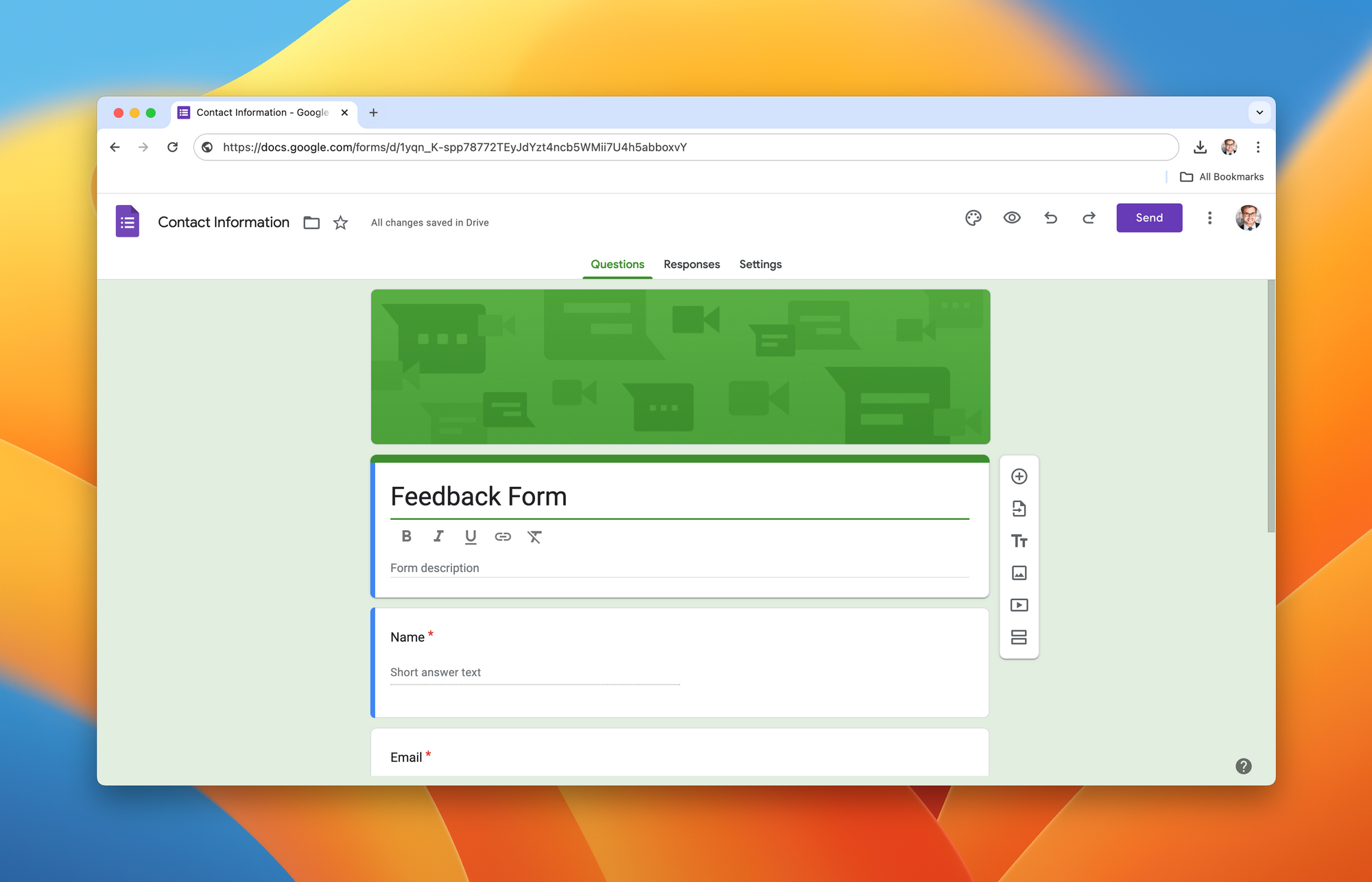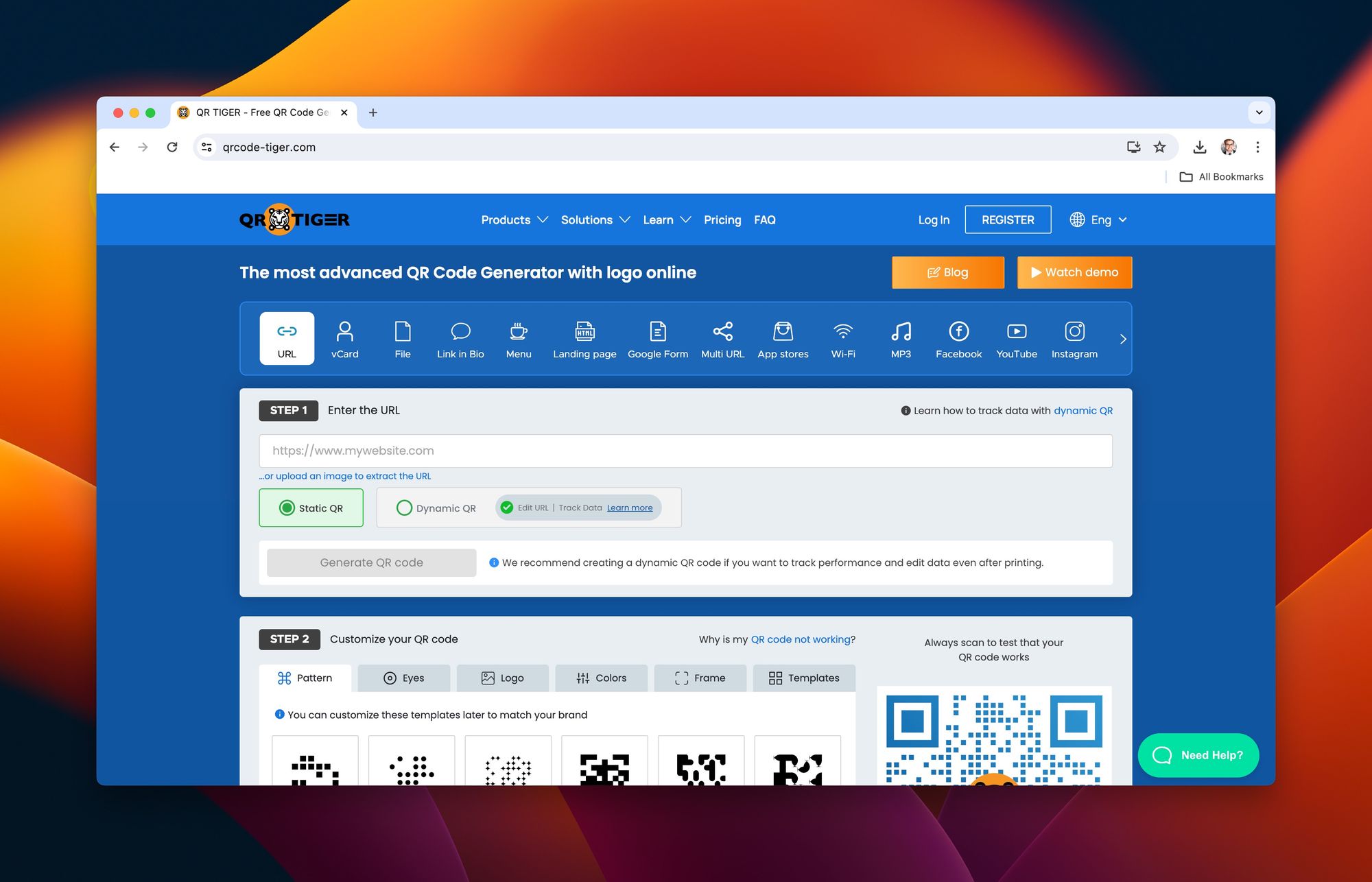How to Generate QR Code for Customer Feedback?
In case you're wondering, QR or Quick Response codes are a type of two-dimensional barcode that can be quickly scanned using a smartphone camera to provide data embedded within the code. It's a method to access information instantly, ranging from simple text to connecting to websites. Imagine it as a physical link you can scan with your phone.
Now, let us step into why customer feedback is so crucial. In any business, whether retail, food, tech, or any service in general, feedback is a goldmine of unfiltered opinions and suggestions. Businesses thrive on it - they learn, adapt, grow, and improve based on it. With the digital era making a mighty presence, technology has indeed made gathering this feedback faster, simpler and more efficient.

The Need for Instant Feedback
Businesses flourish not just by providing outstanding products or services but by maintaining sterling customer satisfaction. It's customers who build or break a business, hence why their satisfaction is paramount.
Customer feedback is a critical tool that provides insights into how customers perceive your products or services and what they believe could improve or change. By focusing on customer satisfaction and addressing their needs and wants, businesses can build lasting relationships that drive growth, loyalty, and brand love.
But it's not just about fandom; feedback is a pillar for continuous business improvement. Constructive criticism is often more valuable than praise because it allows businesses to pinpoint areas for improvement. This strategy strengthens their weaknesses and optimizes strengths to offer unparalleled customer experiences.

And this is where instant feedback via QR codes becomes transformative. Customers smell authenticity a mile away. By using their feedback to make immediate improvements, businesses show they value customers' opinions and act upon them. This approach not just enhances the customer experience but boosts customer satisfaction significantly. Immediate action on received feedback conveys that their voice matters, leading to more engaged and loyal customers.
At this point, you might be thinking about how to gather real-time feedback. QR codes might just be the solution you're searching for.

Using QR Codes for Customer Feedback
Using QR codes for customer feedback is a simple process that can be broken down into a few steps. Let's use QRcode.co.uk, a popular QR code generator, as an example for creating feedback forms.
Step 1 - Create a Feedback Form
Before creating a QR code, you need a feedback form. You can make one using online services like Google Forms or SurveyMonkey. Don't forget to include fields for customer information and a space for their comments, ratings, or suggestions.

Step 2 - Dashboard Overview: The dashboard is quite self-explanatory with fields awaiting your input. You can choose your QR code type, enter appropriate details or text, and generate your QR code hassle-free.

Step 3 - Choosing Dynamic URL to paste Feedback Form's URL: Select the URL option and paste your Feedback Form's URL in the blank field.

Step 4 - Customize the code to match your brand aesthetics:You may personalize your QR Code using Style, Colors, Frame, Branding and Options. After all,press the 'Create' button and voila! Your QR code is created.

Step 5 - Click "Download" button and select type of file you want share: Once you've generated and possibly customized your QR code, saving and sharing it is pretty straightforward:

Remember to test your QR code to make sure that it properly redirects to your Feedback page.
QR code systems are effective feedback gathering tools, as long as they're used correctly. Keep the process simple and hassle-free to promote customer participation.
Tools for Creating QR Codes
When deciding to embark on your journey of using QR codes for feedback collection, picking the right tools is crucial. Here we highlight three popular QR code generators, including QRcode.co.uk.
QRcode.co.uk
As mentioned earlier, QRcode.co.uk is a user-friendly website suitable for all your QR code needs. However, it's important to know that while the free version is quite generous, access to features like editing and tracking would require a premium account.

Pros:
- Easy to use interface.
- Free version available.
Cons:
- Limited features in the free version.
- The premium version starts at £10/month for additional features.
Scanova
Scanova is famous for its detailed analytics and editable QR codes. It's a great pick for businesses that need to track the scanning of their codes closely.

Pros:
- Includes valuable analytics.
- Editable QR codes.
Cons:
- No free version beyond the 14-day trial.
- Premium plans, which give access to all features, start from $15/month.
QR Tiger
QR Tiger stands out with its bulk generation of QR codes and simplicity, making it a go-to tool for businesses with high QR code demand.

Pros:
- Can generate QR codes in bulk.
- Easy to use.
Cons:
- No advanced tracking analytics.
- Paid plans start from $7/month.
Using QR Codes for Customer Feedback
The implementation of QR codes in gathering customer feedback offers several distinct advantages. QR codes streamline the feedback collection process, making it accessible and user-friendly, just a quick scan away.
On a digital feedback form, customers can rate their experience, make suggestions for improvement, or voice any concerns, making it a versatile tool for businesses to enhance their offerings. Feedback forms can be placed on various channels like emails, receipts, on-store displays or on the business's website.
Let's have a look at a real-world example of successful QR code implementation for feedback. Restaurant chain FastBites revolutionized its customer feedback system by placing QR codes on their tables leading to a quick online survey. This move led to a 50% increase in feedback responses. Notably, the management acted swiftly on the received responses, leading to noticeable improvements in customer service and overall satisfaction.

This success resulted from a well-laid feedback strategy – right from the creation of QR codes to analyzing customer feedback. The functionality and efficiency of QR codes show just how impactful they can be when utilized strategically.

In the next segment, we'll be exploring the distinct advantages of using QR codes for gathering customer feedback, along with relevant examples. Additionally, we'll look at the challenges businesses often face while implementing QR codes and how to overcome them.
Advantages of using QR Codes for Feedback
The innovative deployment of QR codes in feedback collection comes with numerous advantages.
Speed and Ease of Use for Customers
Your customers will thank you for using QR Codes. Just a quick scan on their smartphones and they are redirected to the feedback form. In an era when speed matters, this instantaneous method saves the customer's time and the struggle of manually typing a URL.
Mobile-Friendly
As QR codes are predominantly scanned via smartphones, they integrate seamlessly into today's mobile-dominant era. This means customers can easily provide their feedback on-the-go, fitting perfectly into the busy lifestyles of modern customers.
Environmentally Friendly
The shift from paper feedback forms to digitally encoded QR codes is a green move. It signals the company's commitment to sustainability, which could improve brand image in the eyes of environmentally-conscious customers.
Anonymity Leads to Honest Reviews
Online feedback via QR codes provides anonymity, and customers are more likely to provide honest feedback when their identity isn't exposed. This point can yield more genuine insight about your products or services.
Real-Time Collection and Analysis of Data
Overall, a crucial advantage is the ability to collect feedback instantly for timely analysis. Unlike traditional methods that may involve data entry from paper forms to databases, this approach offers feedback data in a ready-to-analyze format. Businesses can quickly identify trends, make informed decisions, and rectify any issues promptly.

As we delve further, we'll explore some common challenges that come with implementing a QR code feedback system and practical solutions to these challenges.
Challenges and Solutions
While the benefits of using QR codes for customer feedback are significant, certain challenges might arise during its implementation. But don't worry, for every problem, there's a solution.
Challenge 1: Customer Knowledge
Some customers might not be familiar with QR codes or how to use them.
Solution: Educate your customers. Create easy-to-understand instructions next to the QR codes. Regularly training employees to assist customers can also be beneficial.
Challenge 2: Need for Specific Devices
Not all customers carry smartphones or devices capable of scanning QR codes.
Solution: Continue to offer alternative feedback methods. QR codes should enhance the customer's options and not become a hindrance.
Challenge 3: QR Code Scanning Issues
QR code might not scan properly if the print quality is poor or if placed in low light areas.
Solution: Ensure the QR codes are printed clearly and are well lit when displaying them. Test them regularly to maintain their functionality.
Challenge 4: Overlooking Accessibility
Some customers with visual impairments may not be able to utilize QR codes effectively.
Solution: Make your feedback systems inclusive. Pair QR codes with other assistive technologies or offer help to those who need it.
Challenge 5: Low Response Rates
Even with the innovative feedback collection system, some customers still might not leave feedback.
Solution: Encourage feedback. Providing incentives or making your customers feel valued for their feedback can significantly increase response rate.
These solutions ensure that your QR code feedback system is efficient and accessible to everyone, creating a positive feedback experience for your customers.

In the next section, we will explore the future of QR Code for customer feedback and how this technology is expected to evolve in the coming years.
Future of QR Code for Customer Feedback
As we move forward in the digital era, the way businesses interact and engage with their customers is evolving, and QR codes for customer feedback are part of this evolution. Considering the surge in mobile usage globally, QR codes are poised to play an integral role in shaping customer-business interactions, primarily feedback collection.
We live in an age where information is not just power, but it needs to be real-time. The use of QR code for instant feedback plays perfectly into this scenario. With the tap of a smartphone on a QR code, customers can swiftly voice their opinions and businesses can make immediate improvements.
Looking ahead, emerging technologies such as NFC (Near Field Communication) could potentially impact the way businesses collect customer feedback. Just as QR codes improved upon the traditional paper and pen method, NFC could similarly enhance QR code systems by making it as simple as touching an NFC tag with a smartphone to give feedback.
However, the affordability, accessibility, and ease of use offered by QR codes still make them the primary consideration for businesses today. The universal compatibility of QR codes with smartphones without needing any extra hardware is a primary advantage over NFC, which requires specific hardware.

In conclusion, the adoption of QR codes for customer feedback enriches the business model with agility and real-time customer insights. As technological innovations shape this landscape, businesses that adapt and keep up with these changes will stay ahead in the game.
In our exploration of QR codes for customer feedback, we've discovered a blend of tech innovation and traditional methods that are transforming the business landscape. In the current era dominated by smartphones and on-the-go lifestyles, capturing instant feedback via QR codes has proven fast, effective, and customer-friendly.
Adopting QR codes into your feedback collection strategy not only benefits you with real-time data but also enhances the customer experience. In a competitive business world, customers value being heard and appreciate immediate action based on their feedback. Plus, the use of QR codes sends a progressive, environmentally friendly signal about your brand.
Embracing this digital transformation shows the business's commitment to adapt and evolve. The future looks promising for QR codes in feedback collection, with vast possibilities yet to be explored and unlocked.
We encourage businesses to consider integrating QR codes into their feedback strategies, opening the door for rapid improvements, greater customer satisfaction, and ultimately, business growth. Stay at the forefront by acknowledging, valifying, and acting upon what your customers express.
Frequently Asked Questions
What is a QR Code?
A QR (Quick Response) code is a type of two-dimensional barcode that can be scanned using a smartphone camera to provide data embedded within the code.
Why should I use QR codes for customer feedback?
QR codes are easy for customers to use, environmentally friendly, provide anonymity for honest feedback, and allow for real-time data collection and analysis.
Are QR codes expensive to generate?
No, generating basic QR codes is usually free. However, premium options for more advanced features such as editing, tracking, and QR code branding can come at a cost.
What if my customers don’t know how to scan a QR code?
Most modern smartphones can scan QR codes directly from their camera app. However, for customers unfamiliar with this technology, it's crucial to provide clear, easy-to-understand instructions alongside your QR code.
Is customer feedback via QR codes anonymous?
Yes, giving feedback via QR codes is anonymous unless the feedback form asks for personal identification information. This anonymity often encourages more honest and constructive feedback.
What if my customers don't have a smartphone or a device that can scan QR codes?
Keep offering alternative feedback methods such as email surveys or physical comment boxes. The goal is to enhance your customer's feedback options, not limit them.
Does NFC replace QR codes?
NFC, or Near Field Communication, is another method of providing quick access to digital data. While it can be beneficial, it requires specific hardware, making it less universally compatible than QR codes. QR codes still hold the upper hand in terms of accessibility via any smartphone.

